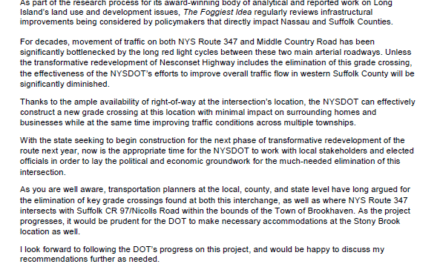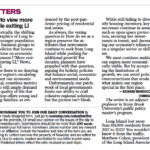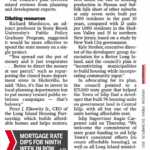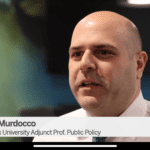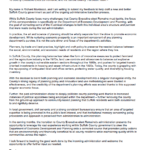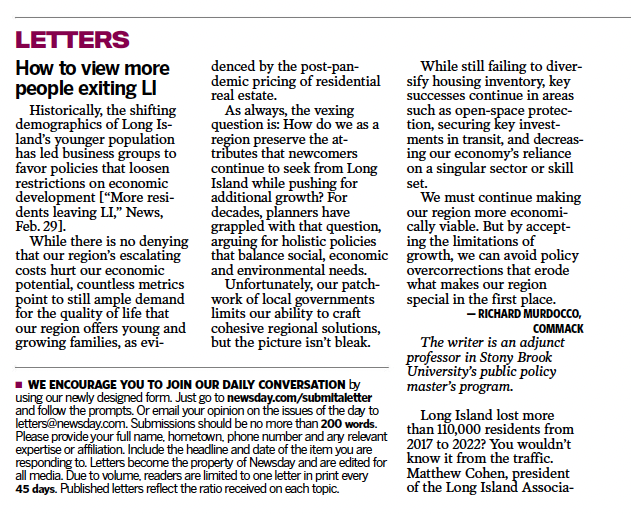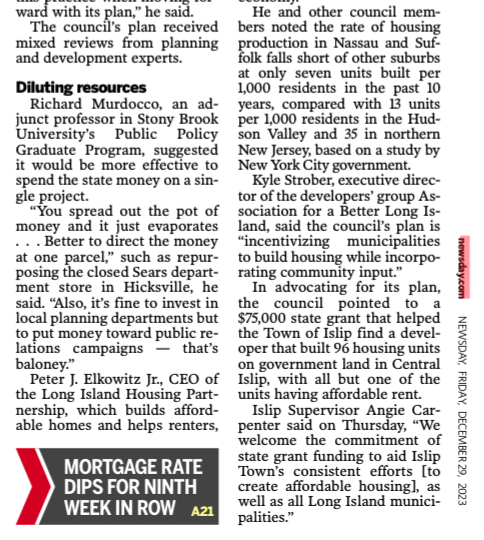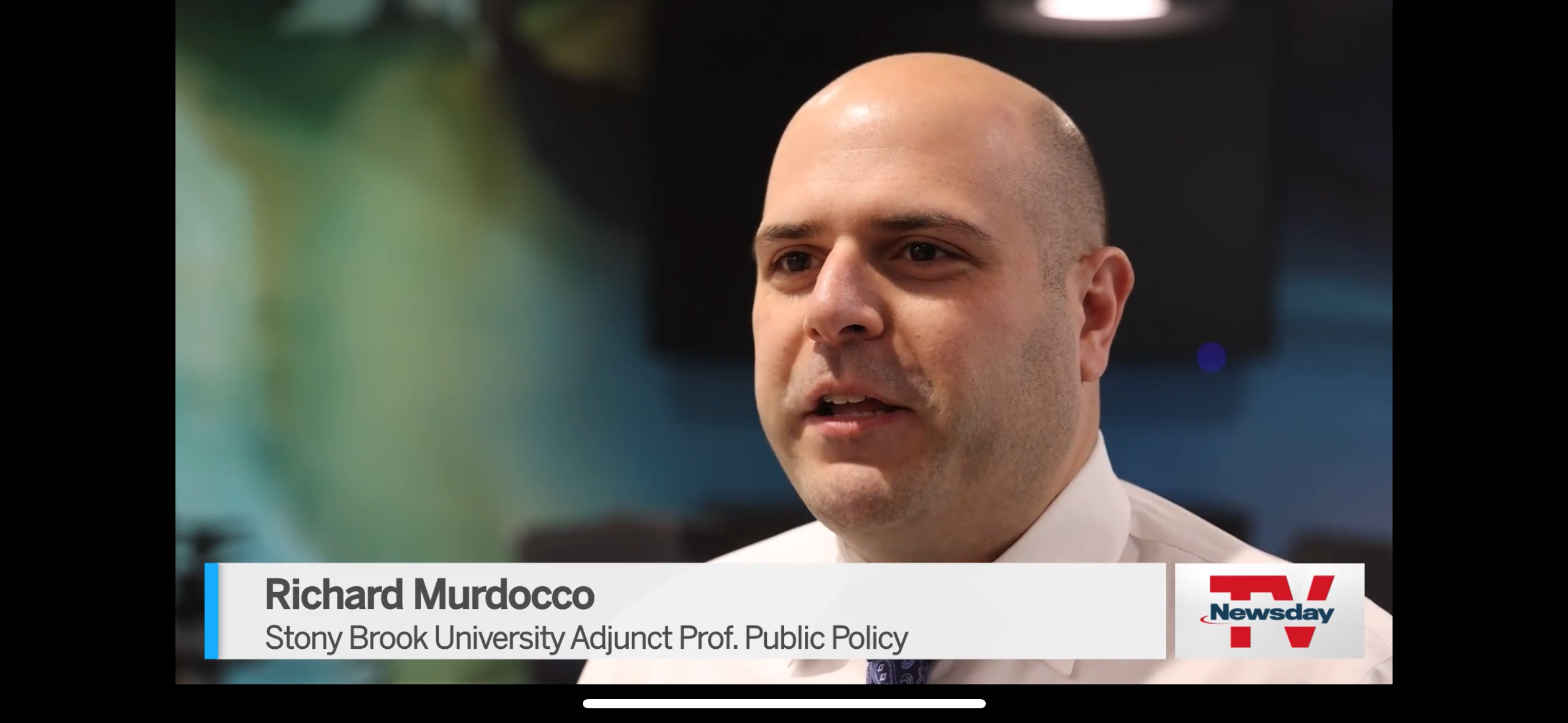The following was published on LIBN’s Young Island on 2/6/13. The piece explored the Long Island Index’s report calling for investing in the Long Island Railroad, and concentrating growth around transit hubs. I feel that as a region, we should go beyond the LIRR, and look at our road network as well. The piece can be read here
Recently, my fellow Young Island blogger Tara Bono wrote an informative piece on the latest Long Island Index report. In summary, the report calls for centering our regional development efforts around the expansion of the Long Island Rail Road. The report’s recommendations are valid, simply put: The railroad serves as an important component to the future of Long Island.
However, the LIRR is only one piece of the puzzle that must fall into place. As a region, we must expand the scope of the Index’s recommendations to encompass Long Island’s entire transportation network. If you think our railroad is inadequate, drive on Hempstead Turnpike in Nassau or Nesconset Highway in Suffolk at 5 p.m. Like the LIRR, our roads were built for a rural Long Island that hasn’t existed since the 1960s. Despite the building boom, which both Nassau and Suffolk experienced, things haven’t changed much regarding our transportation network since then.
While transit-oriented development is the direction Nassau and Suffolk should move toward, we must not ignore our existing infrastructure for the sake of TOD. We must work toward upgrading what we already have in place to handle all of the future TOD growth that we’d like to welcome to the region. To stay competitive, Long Island needs to invest in both new and existing assets.
To measure a road’s capacity, transportation planners use a metric called “level of service,” which grades the effectiveness of roads on a scale of A to F based upon the flow of traffic. On Long Island, our road network currently averages a C on the LOS scale, give or take a grade or two depending on the time of day.
Sadly, while the problem is easy to identify, the solutions are not. Most improvements to state roads reflect policy recommendations set a decade or so before they are implemented, resulting in repairs that are often already obsolete. State and local policymakers must look at the current system beyond the election cycle and start working with the public to implement sound transportation policies that reflect where we are currently and where we are going.
If the growth potential of our region is strong with investment in the railroad, imagine what dividends further investment in all aspects of our transportation network would pay. If we can all work together across municipal lines and craft a regional approach to solving our transportation issues, addressing Long Island’s other needs such as the provision of affordable housing for all ages, the need for economic growth and a diversification of our local economy will be much easier.
Richard Murdocco is the principal grantwriter for Community Development Corporation of Long Island. Follow him on Twitter @TheFoggiestIdea.


